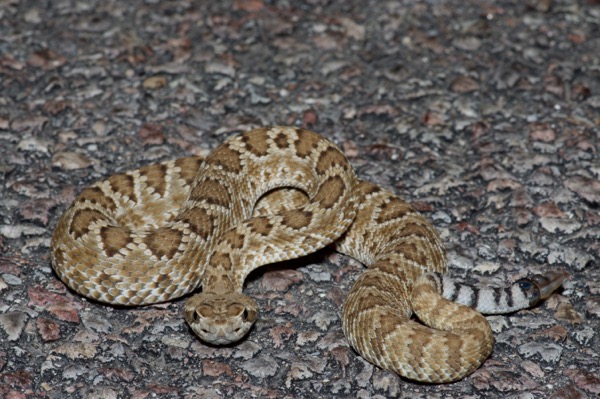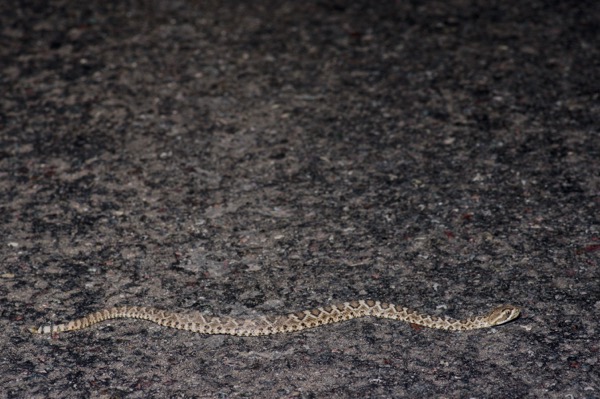Crotalus scutulatus
—
Mohave Rattlesnake
As I write this, the English name for this species is spelled "Mohave" by the SSAR names list that I'm using. But there's a strong argument being made by some herpetologists that "Mojave" is the more appropriate spelling, and a lot of references use that spelling.
Subspecies I've seen:
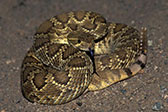
C. s. scutulatus
Northern Mohave Rattlesnake
Crotalus scutulatus scutulatus
—
Northern Mohave Rattlesnake

Mohave rattlesnakes have a reputation for having especially potent venom and being especially aggressive. Studies have shown that the venom is quite variable among different populations of this species. The aggressive reputation is probably mostly or entirely legend. (People tend to assume that dangerous animals are aggressive, whereas in truth most of them are shy and want nothing more than to avoid contact with humans.)
My friend Don MacCubbin and I saw this one on a road at night. We encouraged it off the road with my tripod's extended legs so it wouldn't get squashed. It sluggishly moved in the direction we suggested, but didn't show a trace of aggressiveness.
One distinguishing identification mark of this species is seen clearly in this photo. The tail near the rattle is banded black and white, with the white bands are much thicker than the black bands.
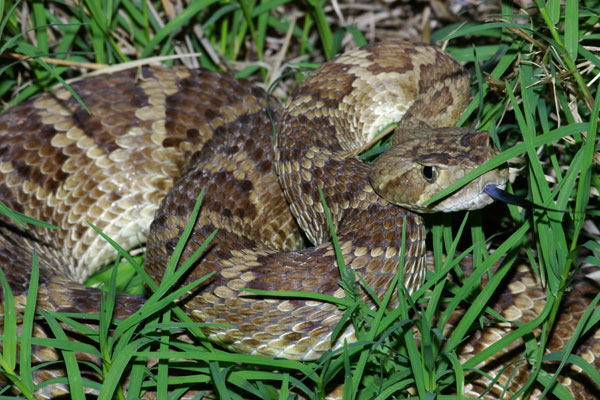
I spotted this rattlesnake as it was prowling near the side of a little-used road at night. It seems to be trying to hide behind a blade of grass.
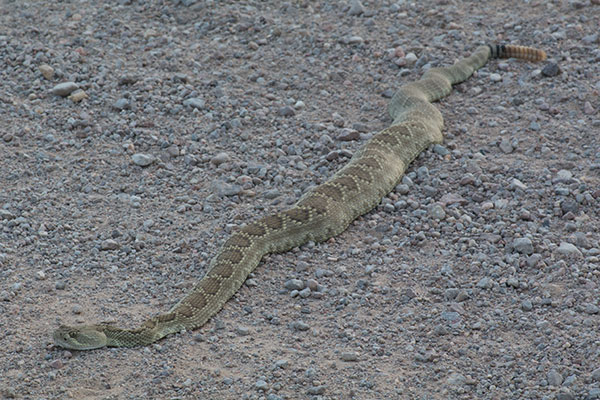
Gathering the last warmth of the sun by stretching out across a dirt road near dusk.
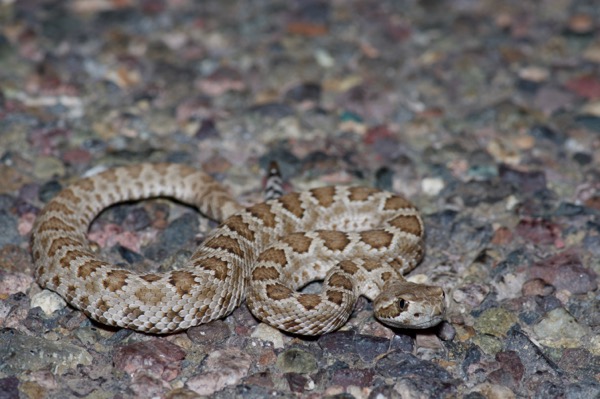
Fall is baby rattlesnake season in southeast Arizona, and this was the first of many baby rattlesnakes I found over the next few nights.
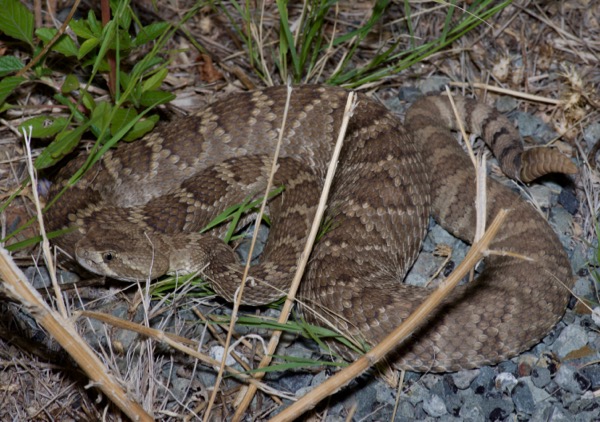
Not all of the rattlesnakes out at night in the fall are babies, though. This is a hefty adult.
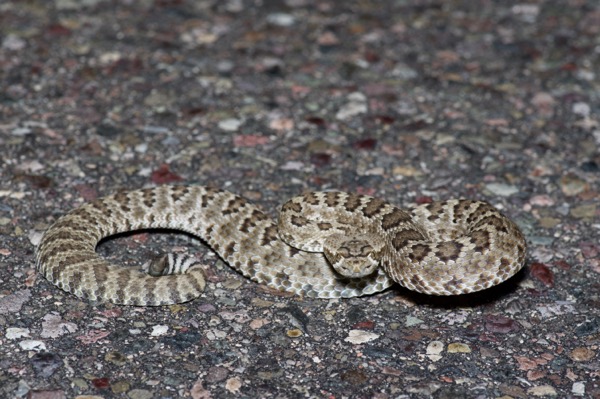
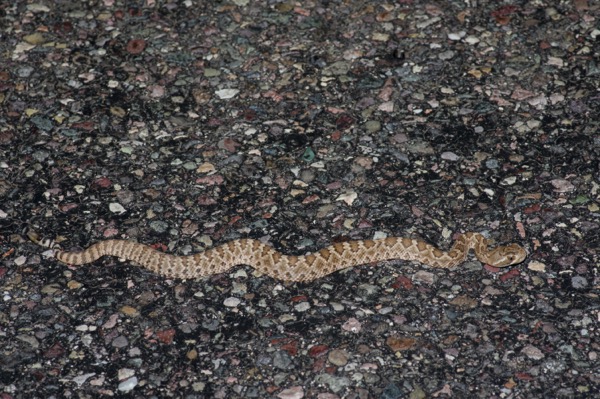
Just a couple of the five or six babies I saw on the road this night.
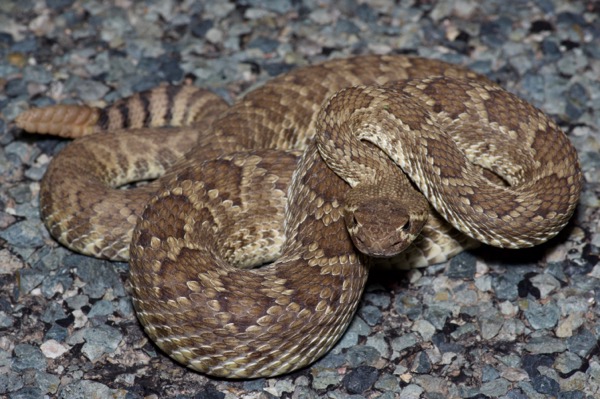
This one is interesting. The large scales, relatively thick light tail bands, and (only partially visible) light stripe behind the eye all point to C. scutulatus. But the multiple small scales between the supraoculars, and the tail-most tail band being black are generally characteristics of C. atrox. It is possible I suppose that it is a hybrid, but I think it's much more likely that it's a somewhat aberrant C. scutulatus. Several people have told me that they agree with this ID.
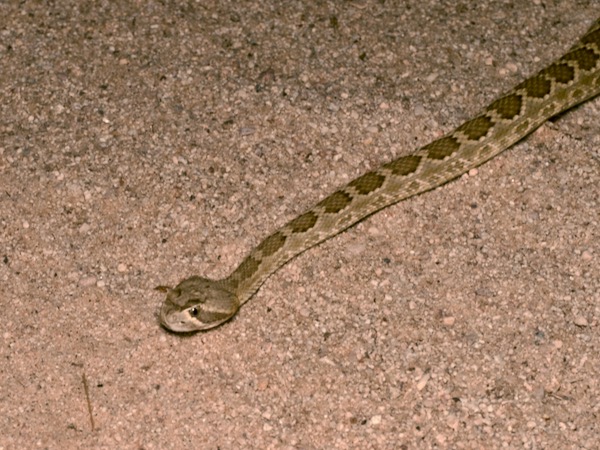
This medium-sized Crotalus scutulatus was prowling in the desert sands early in the evening. I originally misidentified it as Crotalus atrox, but the good folks of iNaturalist set me straight.
Printed references:
- Bartlett, R. D., Tennant, A. 2000. Snakes of North America, Western Region
- Behler, J. L., King, F. W. 1979. The Audubon Society Field Guide to North American Reptiles & Amphibians
- Brennan, T. C. and Holycross, A. T. 2006. A Field Guide to Amphibians and Reptiles in Arizona
- Brown, P. R. 1997. A Field Guide to Snakes of California
- Crother, B. I. (ed.) 2017. Scientific and Standard English Names of Amphibians and Reptiles of North America North of Mexico, with Comments Regarding Confidence in Our Understanding, Eighth Edition
- Holycross, A. and Mitchell, J. 2020. Snakes of Arizona
- Miller, A. H., Stebbins, R. C. 1973. The Lives of Desert Animals in Joshua Tree National Monument
- Smith, H. M., Brodie, E. D. Jr. 1982. Reptiles of North America: A Guide to Field Identification
- Stebbins, R. C. 2003. Peterson Field Guide to Western Reptiles and Amphibians, Third Edition
- Stoops, E. D., Wright, A. 1997. Snakes and other Reptiles of the Southwest, 4th Edition
